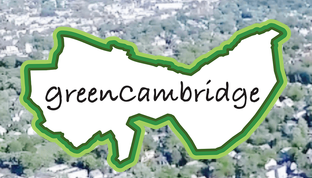Why You Should Get Paid to Fight Climate Change

Photo Courtesy of Green Cambridge
March 8, 2022
If you are reading this, you probably know what climate change is, almost certainly know it’s anthropogenic, and are at least slightly worried about it. If you’re worried about it, you’ve probably also wondered what can be done about it. While federal laws might be most effective at preventing us from spending our sixties in 110-degree Cambridge summers, it’s hard to make a considerable impact on national policy. Most CRLS students can’t even vote. However, there’s a way for you to make a real impact on the future of the planet: volunteering with a local climate action group. If you volunteer with the non-profit organization Green Cambridge, you could get community service hours or a stipend.
When you volunteer for a smaller local climate cause, it’s faster and easier to reduce your community’s carbon footprint, as you don’t have to rely on sluggish bureaucracy. Collective actions are different from individual environmental preservation efforts—like turning off the lights when you leave a room—which have little impact unless performed on a huge scale. When you volunteer with a local climate organization, you gain the power of a community, and your individual actions are more impactful than they would be in a larger movement.
With every form of activism, the hardest step to take is the first; at least, it was for me. After deciding to volunteer, the first step is picking a group. I chose Green Cam- bridge, an organization devoted to Cambridge ecology education and protection. Right now, the greatest threat to Cambridge ecology is climate change. By 2070, major storms (which are only slated to increase in frequency) will completely flood the Alewife reservation, an epicenter of Cambridge biodiversity, according to city predictions.
To combat this, Green Cambridge is launching the Canopy Crew, a program where people sign up to have trees planted in their yards for free, prioritizing yard owners in neighborhoods with the least canopy coverage. This bypasses the red tape involved in planting on public land, and with 80% of planting space being on private property, we can still plant a lot of trees that benefit everyone. They take carbon dioxide out of the atmosphere, ever so slightly slowing down the green- house effect that’s heating the planet. According to the EPA, trees can mitigate urban heat islands and soak up rainfall, which would help with future flooding issues. Finally, the trees will provide shade for the yard owners during increasingly hot summers.
The great thing about this program is that it’s easy to volunteer for. The program is taking volunteers for every step of the process: ideas, outreach, and the actual planting. I know CRLS students are environmentally conscious; I remember how many students participated in the climate change walkout in 2019. That energy needs to be translated into consistent action if we actually want to stop climate change, and planting trees is one of those actions. If you are serious about protecting the future of humanity and the planet, one way to start is by going to greencambridge.org.
This piece also appears in our February 2022 print edition.








